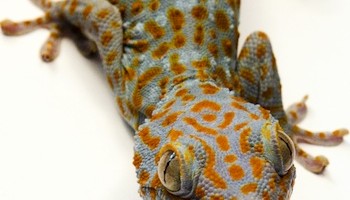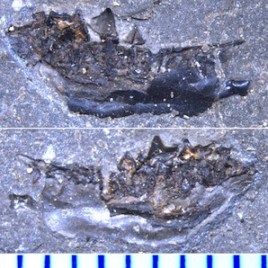
A team of researchers shown that the electrical charges exchanged between the feet of Tokay geckoes like this one and various surfaces is the main driver behind its ability to walk on vertical surfaces, or even upside down. (Photo credit: Hadi Izadi)
Researchers have gained new insight into how geckos are able to walk on almost all surfaces, even upside down. Previous studies have attributed the stickiness of gecko toe pads to a type of force called van der Waals attractions that acts on the tiny hairs – called setae – covering the bottom of geckos’ toe pads.
The new study shows that setae exchange electric charges with the contacted surface, and it’s the electrostatic attraction that arises from surface charging that accounts for most of the stickiness. The insight can help humans design dry adhesives for robotics, wound care dressings and more.
Original research paper published in the Journal of the Royal Society Interface on July 8, 2014.
Names and affiliations of selected authors


